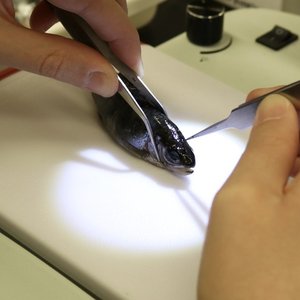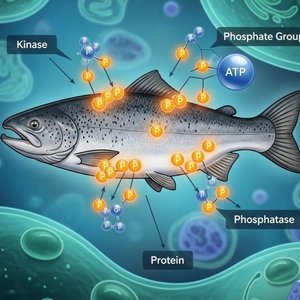Abstract
Sturgeon hatcheries play an important role in the rehabilitation of the sturgeon stocks in the Caspian Sea and elsewhere. Since the demise of the Union of Soviet Socialist Republics in 1991, a large part of the experience, expertise and specifi c knowledge on sturgeon hatchery practices and management in the Caspian Sea Basin has disappeared, while research and knowledge on sturgeon and hatchery practices in other regions have advanced rapidly in the last few decades.
Sturgeon restocking practices that resulted in limited success have caused a critical reassessment of the entire culture process, the strategies applied for conservation culture, the design of rehabilitation programs, the design of hatcheries and the mode of their operation.
This technical paper aims to increase global awareness and to guide and build capacity about the best practices currently available by providing senior and mid-level sturgeon hatchery staff with a practical tool for modern sturgeon hatchery practices and management.
The technical technical guidelines it contains focus on hatchery practices that are aimed at reproduction and growth of fry and fingerlings for restocking objectives. The technical guidelines address a wide range of issues, including: hatchery design and location; collection and transportation of wild broodstock; selection and maintenance of broodstock; tagging of sturgeon; water quality and supply; feeding and feed quality; selection of broodstock for controlled reproduction; spawning and gamete processing; rearing of larvae and juveniles in tanks; rearing of juveniles in ponds; release of fingerlings; sanitary and hygiene measures; hatchery documentation; hatchery maintenance and repair; staff and labour issues; monitoring and research; social and environmental responsibility; international regulations and conventions on sturgeons; and implementation and updating of these technical guidelines.
This technical paper provides specific technical guidelines, justifications for these technical guidelines and suggestions to support their implementation.
The guidance provided is based on the FAO Code of Conduct for Responsible Fisheries (1995) and contributes to the implementation of the Ramsar Declaration on Global Sturgeon Conservation (2006). As such, the technical guidelines in this paper are part of the capacity-building and awarenessraising efforts of the partners involved in their preparation in order to increase the success of sturgeon hatchery practices for release purposes. These partners include: FAO; World Sturgeon Conservation Society; International Union for Conservation of Nature; Caspian Environment Programme; United Nations Development Programme; 6th International Symposium on Sturgeon; World Bank; Institute of Hydroecology; and Central Asia and Caucasus Regional Fisheries and Aquaculture Commission.
Authors
Mikhail Chebanov
South Branch Federal Center of Selection and Genetics for Aquaculture Krasnodar, Russian Federation
Harald Rosenthal
World Sturgeon Conservation Society Neu Wulmstorf, Germany
Joern Gessner
Leibniz Institute of Freshwater Ecology and Inland Fisheries Berlin, Germany
Raymon van Anrooy
FAO Subregional Offi ce for Central Asia Ankara, Turkey
Phaedra Doukakis
Sturgeon Consultant Washington, United States of America
Mohammad Pourkazemi
International Sturgeon Research Institute Rasht, Islamic Republic of Iran
and
Patrick Williot Sturgeon Consultant on Aquaculture and Conservation Biology Audenge, France
Published by
Food and Agriculture Organization of the United Nations Fisheries and Aquaculture Department
Download FAO Technical Paper 570 ISSN 2070-7010 from the link below (PDF)
sturgeon-hatchery-practices-and-management-for-release-guidelines
sturgeon-hatchery-practices-and-management-for-release-guidelines
sturgeon-hatchery-practices-and-management-for-release-guidelines
sturgeon-hatchery-practices-and-management-for-release-guidelines







